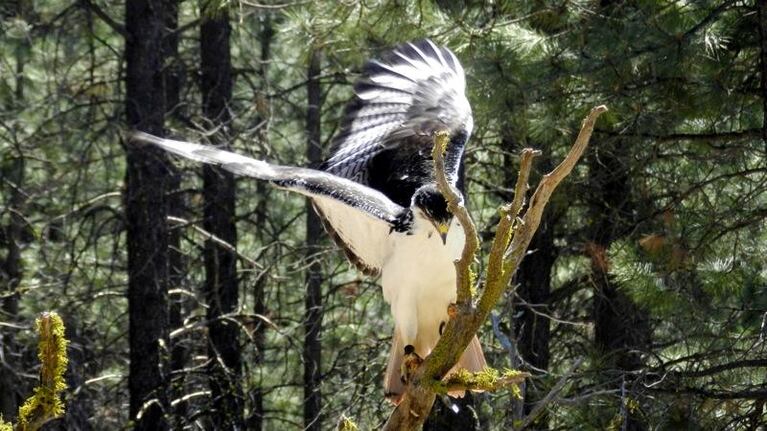
An African Hawk Eagle, part of the High Desert Museum's raptor collection.
Amelia Templeton
As a field biologist, Jim Dawson spent decades studying the
in the Arizona desert. He has written about their unique collaborative hunting style,
, and their nesting behavior.
Now Dawson manages a menagerie of porcupines, otters, rattlesnakes and raptors for the High Desert Museum in Bend. Dawson, who joined the museum in 2010, says that after so many years observing bird behavior, he is bothered by wildlife shows that take animals out of their natural environment and require them to perform tricks.
So Dawson created a new raptor show for the museum that takes place on a forest trail and allows the museum's collection of captive birds to improvise a little. There is no seating and there are no hot dogs for sale.
Instead, about fifty people gather in the pine forest and wait. One after another, hawks land in front of the crowd. The birds follow cues given by trainers, but instead of tricks, they just do normal bird things. One hawk spots a rodent and snatches it up. Another hawk swoops low over Elana Ritchie’s head.
“They’re so gorgeous" she says. "It’s neat because it’s not scripted.”
Dawson says the museum's raptor show is one of only two in the country to demonstrate natural bird behavior and focus on conservation issues. The birds are trained, but some still have a wild streak. Earlier this year, one of the museum’s great horned owls disappeared into the woods for several days. Now, Dawson says, the birds in the raptor show are micro-chipped.



